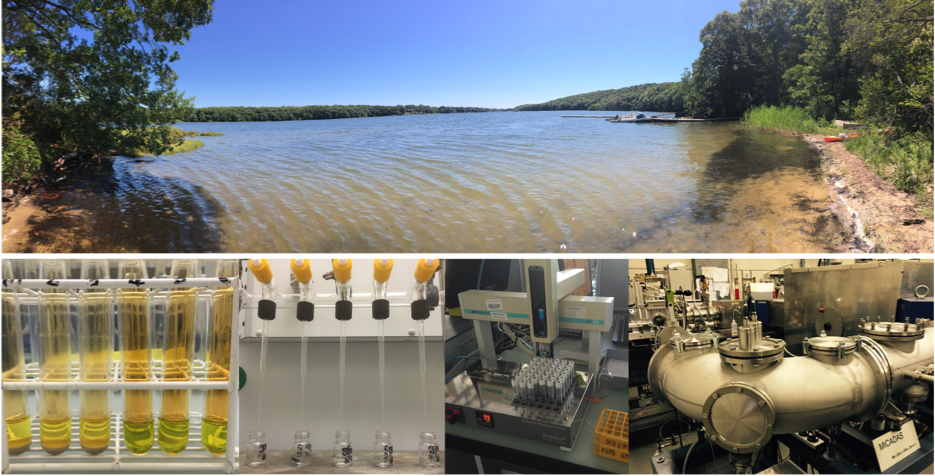Combustion leaves its signature in aquatic sediments: unraveling origin and fate of pyrogenic carbon using molecular 14C records
The global carbon cycle has been shaped by fire since the appearance of terrestrial plants in the Silurian about 420 million years ago. In more recent history, the transition of subsistence to industrial economies has been accompanied by the conversion of forests into agricultural or pastoral landscapes by the human use of fire [Bowman et al., 2009]. Moreover, the increasing usage of fossil fuels with industrialisation has added carbon to the contemporary carbon cycle.
Combustion processes are incomplete and convert fuels not only into carbon dioxide and water but they also cause the formation of other species such as pyrogenic carbon (PyC). The latter is a collective term describing a continuum of condensed aromatic compounds generated during biomass burning and fossil fuel combustion. PyC can originate from natural and anthropogenic vegetation fires, coal mining, energy production, industry and transport and subsequently can be transported over long distances by wind and water before eventually be buried in sediments. However, the role of PyC in the global carbon cycle is poorly understood and neither estimates for PyC pool size and fluxes, nor comprehensive information about the contribution of fossil carbon to particulate deposits of PyC in terrestrial environments are available [Bird et al., 2015].
Figure 1: above Sampling location at Pettaquamscutt River, RI, U.S. and some impressions from laboratory work of compound-specific radiocarbon analyses: from bottom left oxidative degradation of sample material, LC eluent containing individual molecules under nitrogen stream, auto sampler for gas ion source equipped AMS and the accelerator MICADAS at ETH Zürich.
In this project we trace combustion products in anoxic sediments from two confined catchments in North America during the industrialized era. The Pettaquamscutt River, RI, U.S. is located downwind of coal mining and heavy industry recording a pronounced human influence [Hanke et al., 2016]. Contrastingly, Lake Siskiwit, Great Lakes, U.S. is a restricted conservation area without local sources of pollution. We apply compound-specific radiocarbon analyses for two complementary molecular markers of combustion benzene polycarboxylic acids (BPCA) and trace markers of combustion polycyclic aromatic hydrocarbons (PAH). This study aims at elucidating characteristics of the biogeochemical cycling of PyC, the contribution of fossil fuels to sediment burdens and consequently will shed light on a key component of the global carbon cycle.
Bird, M. I., J. G. Wynn, G. Saiz, C. M. Wurster, and A. V. McBeath (2015), The pyrogenic carbon cycle, Annual Review of Earth and Planetary Sciences, 43, 273-298, doi:10.1146/annurev-earth-060614-105038.
Bowman, D. M. J. S., et al. (2009), Fire in the Earth System, Science, 324(5926), 481-484, doi:10.1126/science.1163886.
Hanke, U. M., T. I. Eglinton, A. L. L. Braun, C. M. Reddy, D. B. Wiedemeier, and M. W. I. Schmidt (2016), Decoupled sedimentary records of combustion: causes and implications, Geophysical Research Letters 43(10), 5098-5108, doi:10.1002/2016GL069253.
